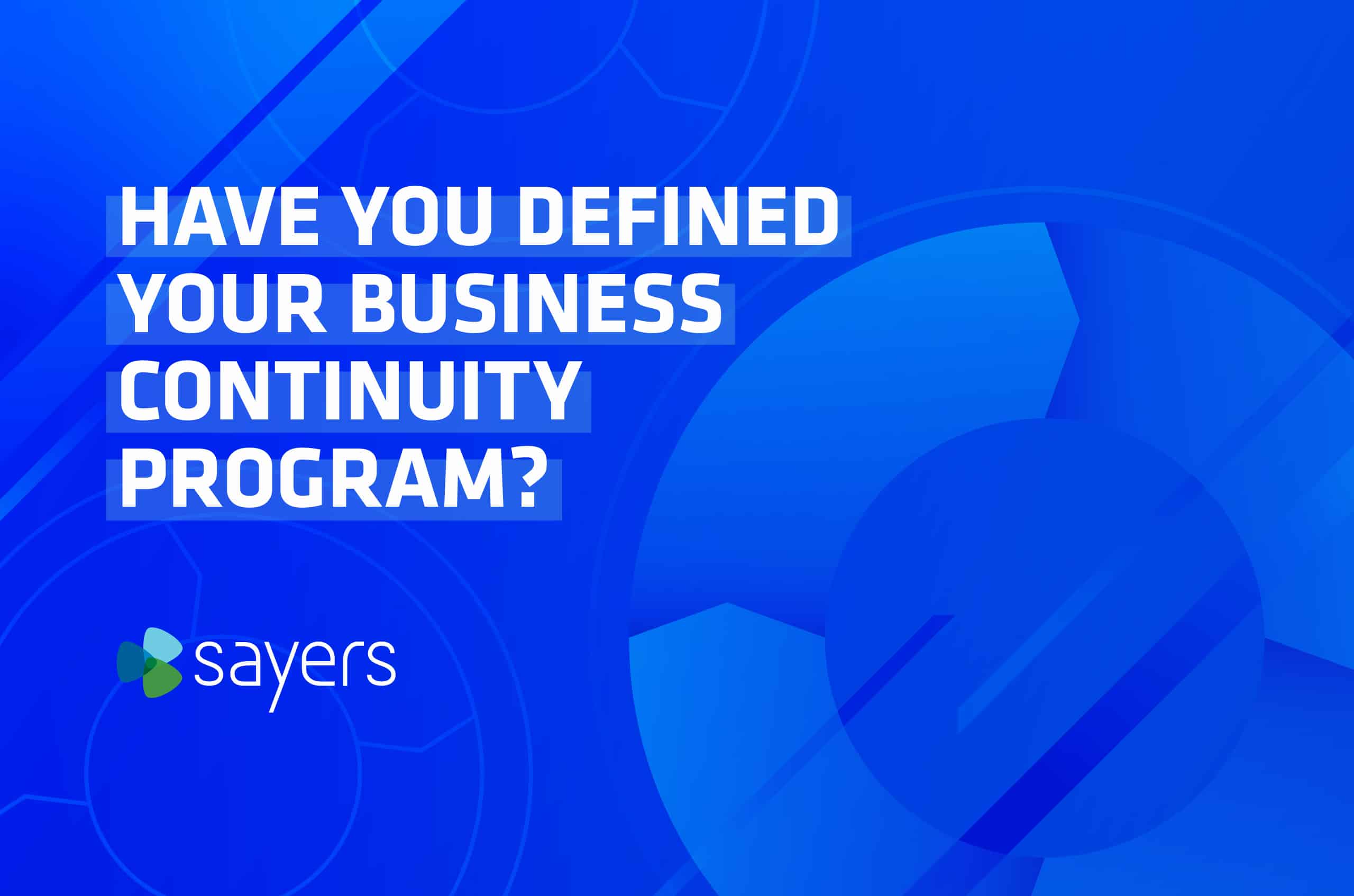Have you defined your Business Continuity Program?
Posted June 7, 2022 by Kevin Finch

What is a Business Continuity Program?
It’s difficult to think of starting any endeavor in business and thinking it would have a chance of success if you didn’t define what you were trying to do. Developing a successful business continuity program is a prime example of this principle.
Think about it. You wouldn’t start on a project that would change the way you ran your business without first mapping out your scope and objectives, and naming your stakeholders. You would also need to define some caveats, like timelines, funding, and staffing. You would also need to paint a picture of what success will look like. Defining your business continuity program is just as important as creating a project charter — without defining what your goals are and how you intend to reach them, you’re never going to achieve them.
“Sound strategy starts with having the right goal.”
Michael Porter, Harvard Business Review
Business Continuity absolutely has the potential to be one of those endeavors that changes the way you do business. For many companies, developing a business continuity program is the first time they have ever tried to document their business operations. They may never have examined the interdependencies between different parts of their own business, and alternatives for those interdependencies. There may even be some legal or regulatory requirements that have not been documented because the business doesn’t even realize that some operations fall under the purview of a regulatory agency. The business may also not fully appreciate the value of internal and external stakeholders, and their inputs to various parts of the business.
Defining Your BCP
That may seem like a lot of work (and it can be), but there is value to the business beyond just the value of the data gathered. The process of examining the business, and enumerating those interdependencies, is invaluable in the long run because of the insights it gives to the way the business truly operates. Some companies don’t truly understand how valuable certain assets or operations are to their profitability and survival until they examine those operations through the lens of their business continuity program. Some companies even realize how unimportant certain operations are as they develop their business continuity program, allowing them to refocus their efforts and increase profitability.
“Research is defining the invisible.”
Steven Magee
If defining the boundaries of your program is so important, then how do you do it? Simply put, you write down what is covered under the business continuity program, and what isn’t covered.
Getting it right is the difficult part, because doing research in one area can easily uncover the need for research in another. For example, your company will do some type of risk assessment to determine what the greatest risks are to the business and use that data in determining the boundaries of the program. However, that risk assessment could easily uncover that vital business operations are tied to a few key vendors, prompting the need to expand the boundaries of the Business Continuity program to encompass Vendor Risk.
Likewise, your company will probably want to do some preliminary Business Impact Analyses to determine the risks presented by interruptions to specific business processes. That preliminary analysis will probably uncover key dependencies between vital business operations, and then business process dependency analysis will need to get added into the scope of the Business Continuity Program. These same sorts of discoveries often happen when you start to list out your internal and external stakeholders, and when you start to map out your company’s regulatory environment.
“ What do you stand for? Define your principles and allow them to serve as benchmarks as you reach toward success.”
Richie Norton
Defining your business continuity program’s scope, objectives, and stakeholders should be considered the first step of the journey to having a strong and mature program. Getting it right might seem like a daunting task, but Sayers is here to help. Our Business Continuity Maturity Assessment Tool can show you exactly where you are on the path, how well-defined your Business Continuity program really is, and where you might need a little help.


